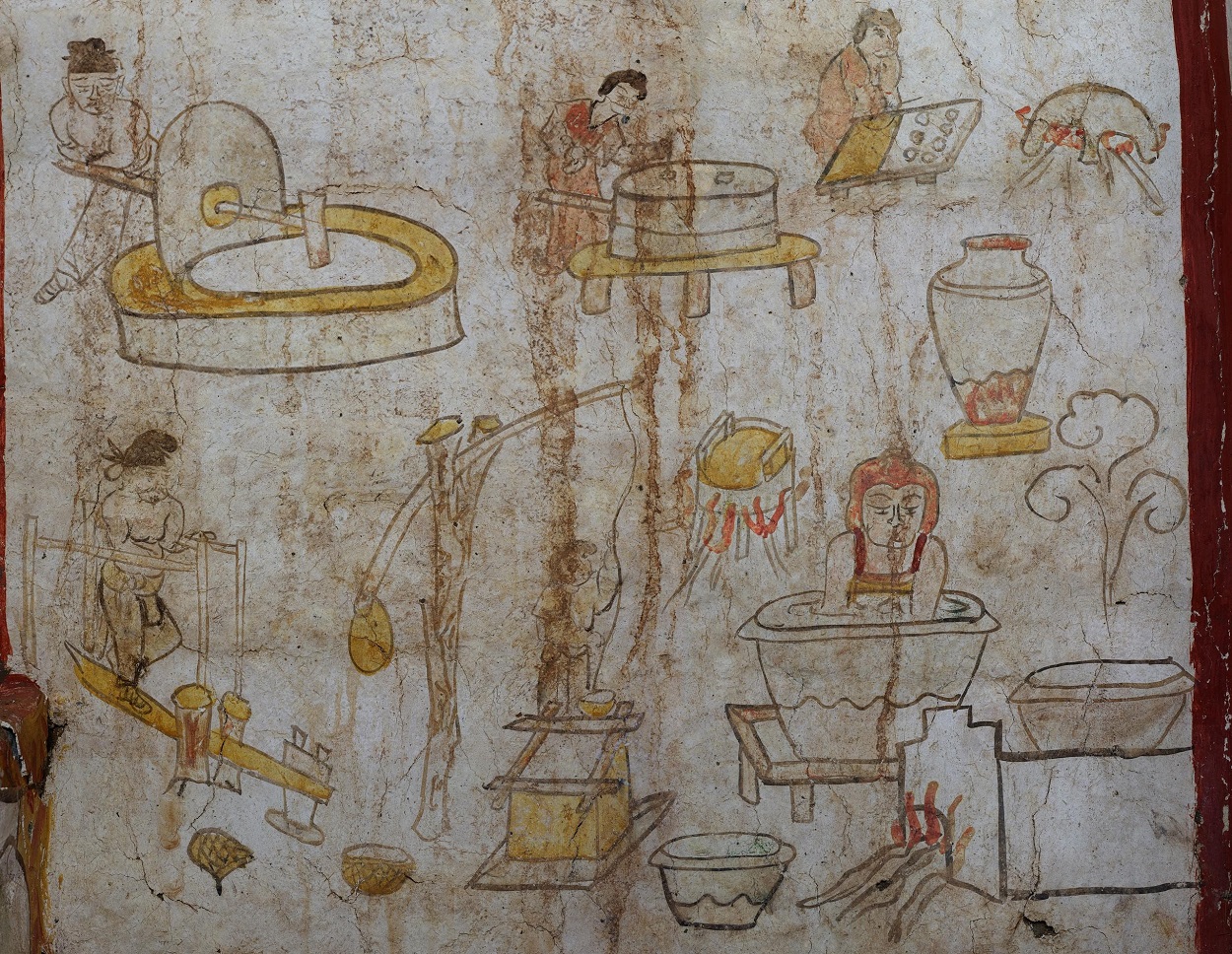Archaeologists have discovered an ornately decorated tomb from the Tang Dynasty (AD 618-907) during excavations in China’s Shanxi Province.
The tomb was initially uncovered during construction works in Taiyuan, and has been under excavation by archaeologists from the Shanxi Provincial Institute of Archaeology since 2018.
Archaeologists have determined that the tomb dates back to the 8th century AD. The ceiling and walls are decorated with murals painted in vibrant colours of white, red, yellow, black, green, and orange.
The tomb is accessed via a portal decorated with swirling botanical designs, and a pair of robed figures who likely served as guardians of the tomb site.
A passageway leads onto the main burial chamber that has a conical ceiling with four fantastical beasts from Chinese mythology, including a dragon and possibly a phoenix.
The walls of the chamber feature a series of panels adorned with thick red ribbons, illustrating various aspects of daily life and people strolling through backdrops of the countryside and foliage. According to the archaeologists, this type of artistic impression is typical of the Tang-era, known as the “figure under the tree” style.

One of the panels has various smaller scenes showing the rolling of a stone grinder, working a stone mill, making dough balls, using a pestle (a rice pounding tool), drawing water from a well, and doing the washing in a basin.
Another panel has a scene showing a woman dressed in a gown, followed by a man leading four horses and a camel. Despite Camels not being native to China, portrayals of the two-humped camel are commonly found in Chinese tomb scenes and sculpture.
According to Long Zhen, the director of the Jinyang Ancient City Archaeological Institute, the artistic style is similar to the paintings in the tomb of Wang Shenzi, who founded the dynastic state of Min (909-945). Long suggests that the same artist may have painted both Wang’s tomb and the newly discovered murals in the Taiyuan tomb.
Header Image Credit : Shanxi Provincial Institute of Archaeology
Sources : Shanxi Provincial Institute of Archaeology





